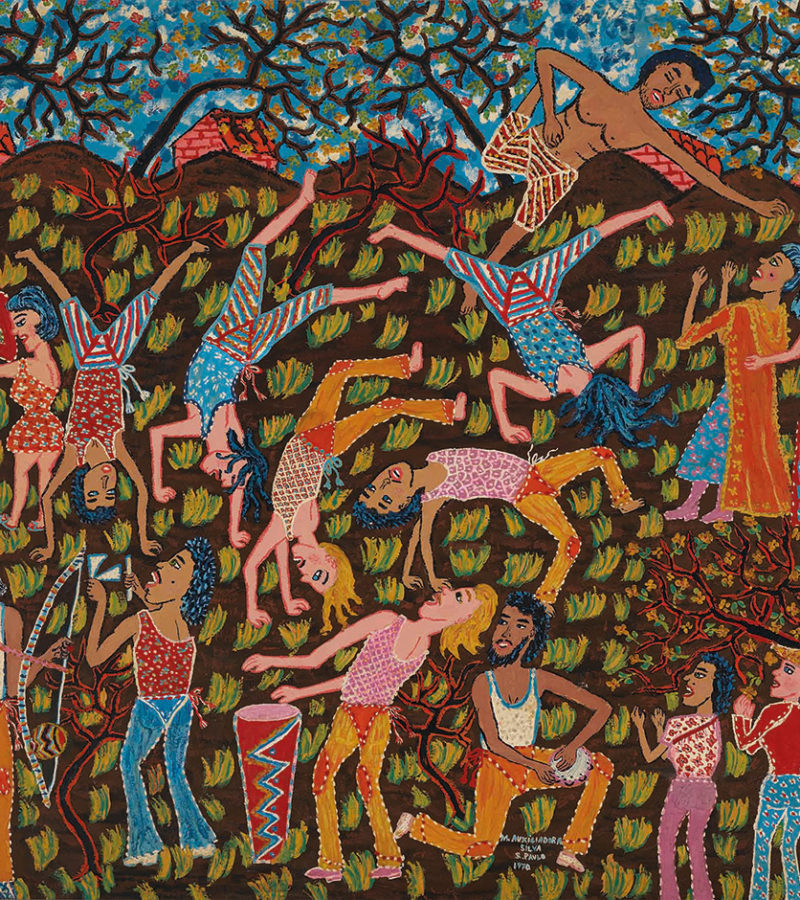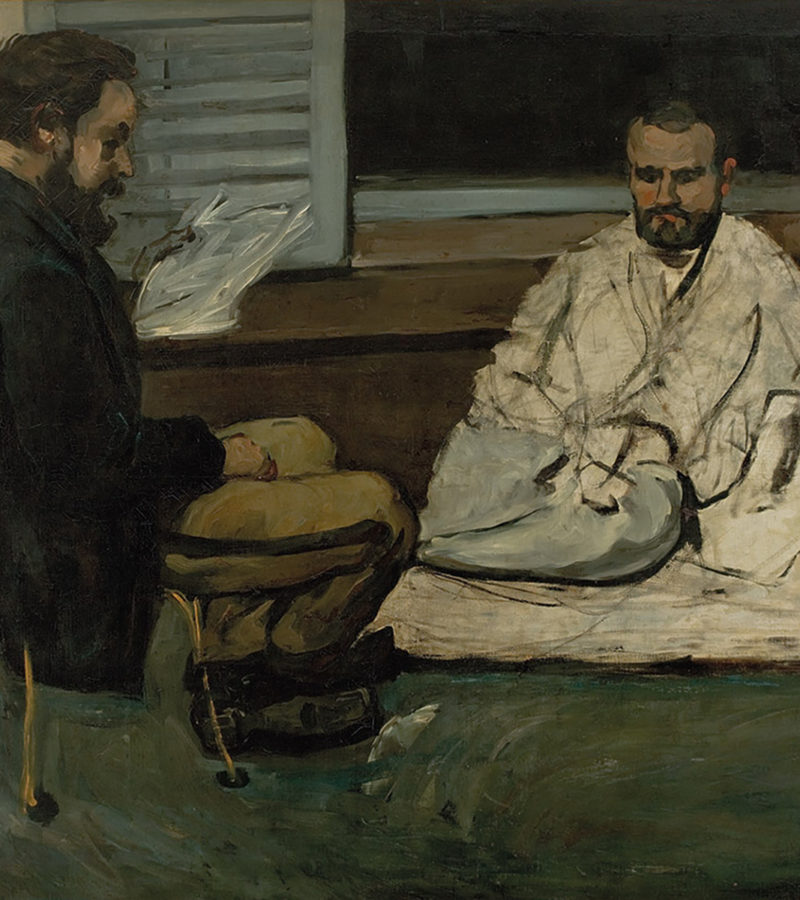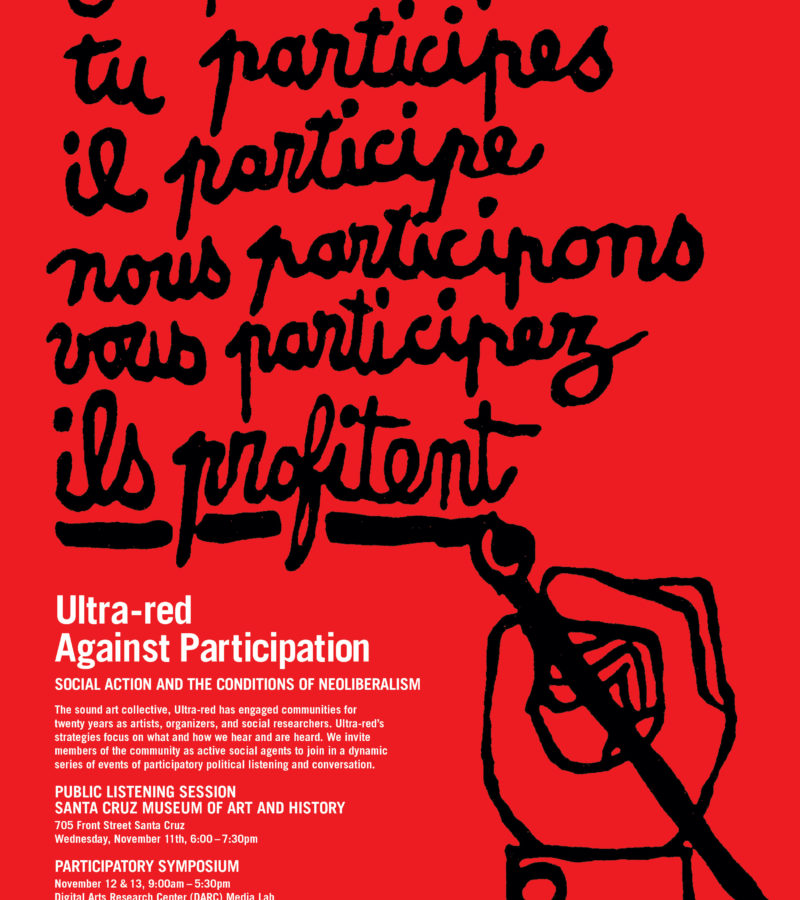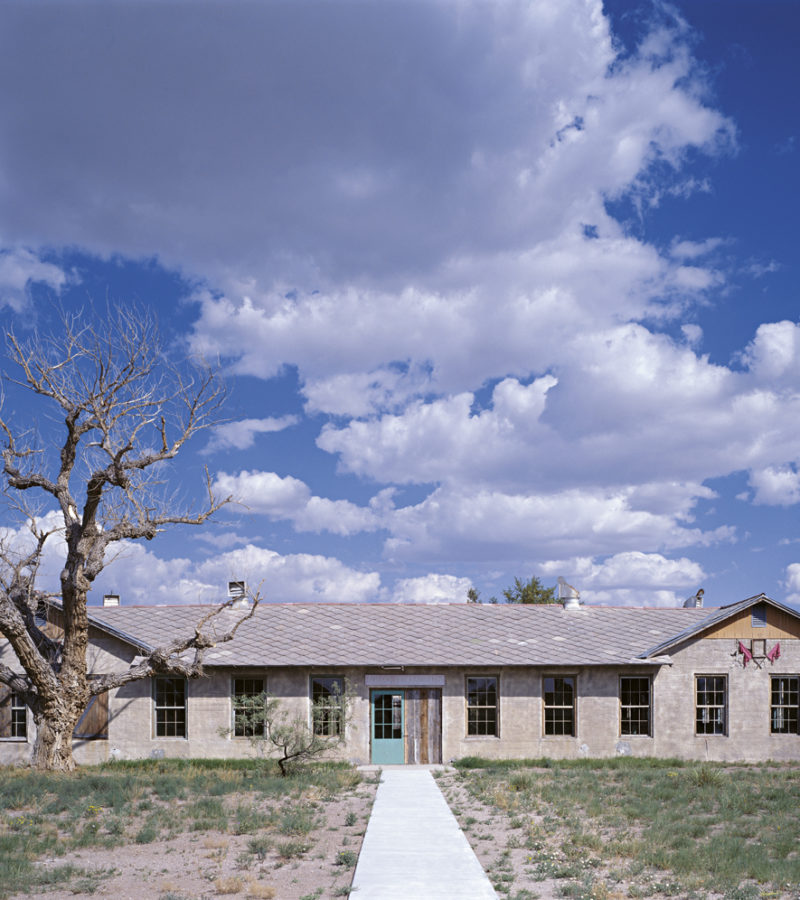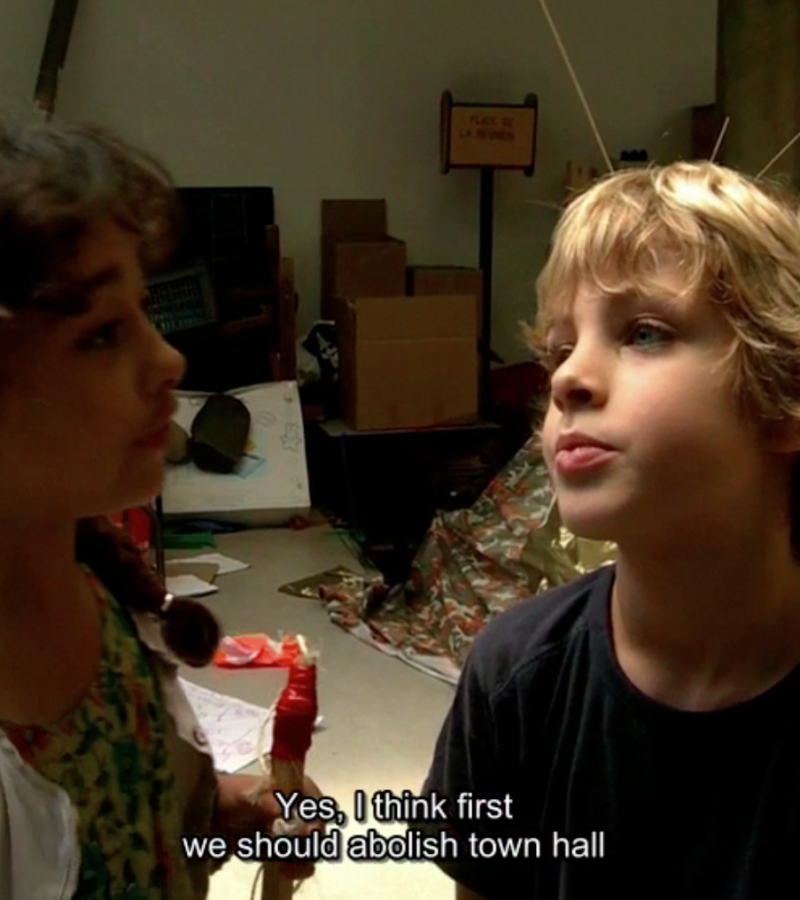A man holds a round shape in front of his body, almost covered by it. Body and circle merge into a single figure of flesh, light and shadows. It isn’t easy to make out what kind of plate is being held, though it seems to reflect the subject’s architectural surroundings, the play of light and shadow projected on walls and through windows. We imagine the subject and photographer might have experimented with angles and position to create this particular view. On closer inspection, it becomes clear that paint and paper, as well as photography, are also involved in this artwork’s composition, in the manner of a collage technique fashionable in the Weimar Republic since the Dada movement. Playing with our perception, the work creates a visual conundrum by combining a human figure with objects and surroundings in an interactive performance.
The work, Photoplastik, Japanese Student at Bauhaus Holding Circle of Shadows, was created by Edmund Collein in 1928 when Collein was a first-year student at the Bauhaus school. He had enrolled in 1927 after studying architecture at the Technische Hochschule Darmstadt, where such experiments as this were not part of the institution’s pedagogical spirit. The term ‘photoplastik’ was introduced by the artist and Bauhaus master László Moholy-Nagy, and refers to photographic works created by combining various graphic design elements, often using collage, with photography. A central question for Moholy-Nagy was whether photography ought to be limited to the reproduction of ‘reality’, or whether it should be engaged in the creation of a fictional visual language, created by playing with and making visible the apparatus itself, and its technological processes. Together with Lucia Moholy, he explored this question through his own photographic experiments at the Bauhaus in Weimar and Dessau between the years 1923–1928.1 Photoplastik experiments were part of Moholy-Nagy’s preliminary course, which all first-semester students, including Edmund Collein, were required to pass. Lucia Moholy-Nagy, who was also responsible for the archival work of using photography to document Bauhaus design up until 1928, was especially engaged in helping students to carry out these experiments in her private dark room, not that she was officially engaged as a Bauhaus teacher, nor was her authorship of the archival photography acknowledged.
What we may see in Collein’s photoplastik is therefore an example of the kind of experimental work produced at the Bauhaus under Walter Gropius’s directorship, whereby a kind of subterranean activity was made possible by informal, unpaid female support. It also, however, reflects a major transformation that the Bauhaus underwent in 1928, when the Swiss architect Hannes Meyer was appointed as Gropius’s successor. Recent art historical work on Meyers’s tenure has offered new perspectives on debates within the Bauhaus that had previously been neglected.2 One such debate springs from Meyers’s critique of the Bauhaus curriculum’s basic pedagogical precepts, including the efficacy of the arts-and-crafts-based workshop model, and the school’s vision of the artist-designer as an individual creator. Meyer introduced courses – including photography – that were somewhat at odds with the model of workshop and material-based apprenticeship implemented by Gropius and Moholy-Nagy. Until then, preliminary courses and handicraft workshops had emphasised the ability for the individual student to blend handicraft techniques with artistic practice to come up with personal design solutions. For Hannes Meyer, the Bauhaus was overly concerned with catering to a niche market for highly-priced design objects, producing chess sets, silver teapots and cups that failed to correspond with the ideal of an egalitarian society. Meyer warned Gropius that the Bauhaus was failing to recognise the needs or social conditions of users for whom the Gestalter should be designing. His famous dictum, ‘Volksbedarf statt Luxusbedarf’ (‘public needs, not luxury needs’) led to him to assert that the artist should be technically and intellectually qualified in a variety of fields, moving away from excessive geometric formalism. Meyer sought to articulate a new role for the Gestalter – acknowledging physical and societal context, and to support forms of collective working and learning. He offered students more autonomy within the study plan, and opened workshops to female students, who under his tenure were also able to work on construction sites. His vision was strongly informed by the socialism of the Swiss socialist and cooperative movement and anti-authoritarian branches of reform pedagogy. Challenging the idea of the individual creator, he expanded the curriculum to encompass philosophy, sociology and the natural sciences, along with other disciplines and fields of knowledge.3
Collein’s photoplastik gestures towards Meyer’s image of the Gestalter as part of an existing and imagined socialist society – a physical/material context that served as a rejoinder to nationalist notions of ‘homeland’. These material conditions would be important to the Gestalter in contradistinction to International Modernist architecture, which put its faith in an universalist methodology that denied local conditions.4 Collein’s work guides us not only to consider these forgotten socialist and communist ideals, which continued to inform radical pedagogy throughout the 20th century, but also to consider the history of Japanese students at the Bauhaus in the late 1920s. The student depicted here is most likely the architect Takehiko Mizutani, who had studied at the Academy of Fine Arts in Tokyo before he visited Germany with a study grant provided by the Japanese government.5 Mizutani was a fellow student of Collein’s, however the absence of his name in the work’s subtitle likely speaks to the extent to which a Japanese student was considered part of the faculty. The student is not only silenced by this title, but holding up the imposing circle, he is framed almost as a support structure. While the work seems to engage with its environment, it nevertheless serves to undermine its subject.
Mizutani, however, would go on to be an influential figure in the development of a radical pedagogical movement in Japan that recognised the contradictions of the Bauhaus experiment and built on these to create something new. Mizutani had first heard of the Bauhaus from Sadanosuke Nakada, a fellow artist of the radical avant-garde group Tan’i sanka in Tokyo, who had visited the Weimar school in 1922. The German modernist scene had also reached Japan via a group of Japanese artists residing in Berlin, some of whom taught calligraphy with Johannes Itten at his Berlin school. When Mizutani arrived in Dessau, the socialist artist Koreya Senda was already known there for his underground theatre performances, and was also active in the queer drag culture of Berlin’s nightclubs. The Modernist movement had provoked an entire generation to question how life might be lived, to the extent that everyday life was imagined as a site of educating the self, rather than this being something limited to schools. Young artists, designers and architects were inspired to move across the globe to be part of this cosmopolitan and internationalist world view.6 It is unsurprising that Mizutani’s experiences at the Bauhaus made an imprint on Japan when he returned back to Tokyo, and yet this this impact articulated itself very differently from the Bauhaus’s legacy in Europe, where the emerging designer subjectivity shifted after World War Two entirely towards the ethos of a maker of saleable goods. In Japan, for a brief period before the rise of nationalism, Bauhaus pedagogy would become an important reference point for a radical pedagogical movement, most obviously the movement to change art education in elementary schools.
When Takehiko Mizutani travelled back to Tokyo in 1930 and became an assistant professor at the Tokyo Art Academy, he was immediately approached by the architect and journalist Renshichirō Kawakita to work on an exhibition that would bring Japanese and Bauhaus modernism into dialogue. The two worked together on a Tokyo exhibition called kōsei, where they created an extraordinary integrated environment involving suspended elements, works on table-tops, walls and the ceiling. Takehiko Mizutani, writing about the idea of kōsei, identified it as a fundamental element of reform in Japanese art education:
Briefly, it is a method whereby a certain linkage between natural phenomena and social phenomena is understood through a multiplicity of activities themselves. At the core of our kōsei education is kōsei itself. This may be termed human activity or labor…. Thus our view is that these activities are encompassed by all of nature and also society. For example, in kōsei education we view the turning of a water wheel, the making of a desk and the building of a house as facts in front of us which we touch and see, which we investigate and test through a range of methods. We understand with hands and eyes why this is so and what we should do…. Simply put, there is direct experience, with eyes wide open to reality.7
The Japanese word kōsei can have many interpretations, depending on intent: structure, composition, organisation, building, construction or education. It could also be understood in terms of what Jacques Rancière calls the ‘distribution of the sensible’. Mizutani and Kawakita used the term to transform specific Bauhaus principles into a new educational theory and aesthetic movement referring to the Japanese philosophy of the design of life, not at all limited to the design of objects. Takehiko Mizutani also helped in founding the Seikatsu Kōsei Kenkyusho (Research Institute of Life Construction), one of the first co-ed vocational schools in Japan. Founded in 1931, the organisation promoted the educational principles developed by Kawakita through exhibitions, lectures, and workshops. In the process, Kawakita also developed the Shin Kenchiku Kogei Gakuin (School of New Architecture and Design), which opened in a suburb of Tokyo in 1932.8 Here he drew on Johannes Itten’s teaching philosophy (which corresponded with Franz Čižek’s ideas on the liberation of the child), appropriating elements of Moholy-Nagy’s teaching as well, along with the synaesthetic teaching method of the forgotten Bauhaus master Gertrud Grunow.9 The Tokyo-area workshops Kawakita initiated in craft disciplines provided new methods for materials-based design and learning. In 1934 Kawakita documented his pedagogical approaches in the publication Kōsei Kyōiku Taikei (Manual for Teaching Thinking Through Construction) together with Katsuō Takei. This publication is widely considered a manifesto for the renewal of art education in Japan, as it promoted the development of creativity and personality in children by letting them paint and draw freely, without telling them what to conceive. The book argued for the democratisation of creativity – the development of a fundamental, general set of skills – and also reflected Mizutani’s experiences in the Bauhaus preliminary course in Japan.
Within a scant few years Kawakita was no longer able to withstand the rising climate of nationalism and militarism in Japan, and was forced to close his school after the Japanese Ministry of Education refused to renew its license. Still, in only a brief period the school influenced numerous Japanese designers and had a decisive influence on not only the future development of Japanese design, but on Japanese culture in general. Mizutani and Kawakita believed that to change a society haunted by an authoritarian regime, class hierarchies and outdated rituals can only be changed from within and below, through the radicalisation of education for everybody.
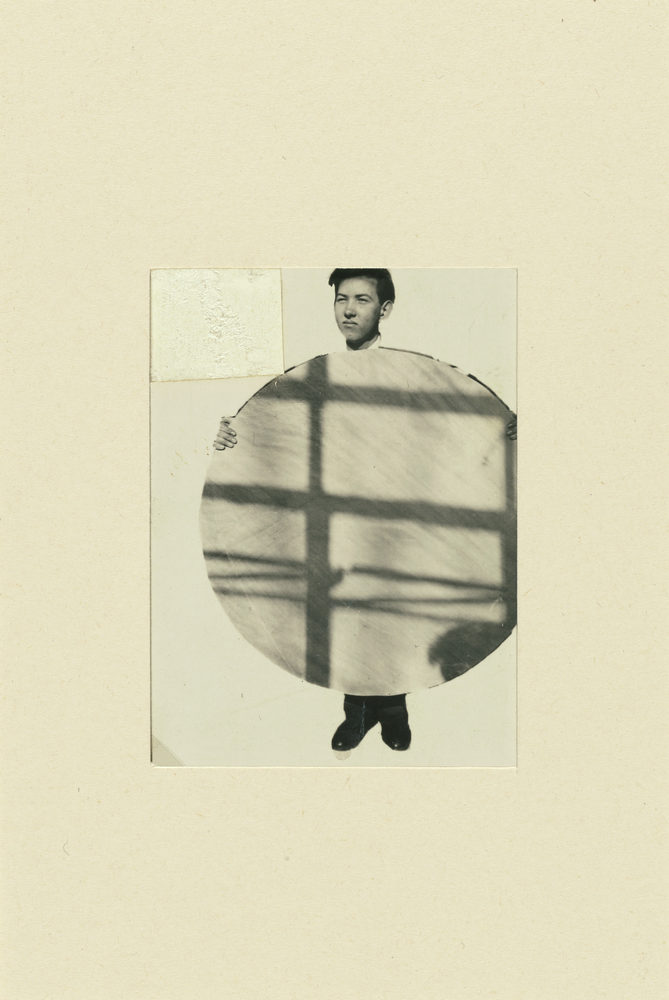
- 1. As Michelle Hennig points out, the couple in their 1922 essay ‘Production-Reproduction’, which Lucia edited and probably co-wrote with László, advocated using reproductive media to make ‘productive art’ that used these media to produce new forms and ways of seeing – a ‘new vision’ (neues Sehen). See László Moholy-Nagy, ‘Production-Reproduction’, 1922 in: Timothy O. Benson and Éva Forgács (ed.) Between Worlds: A Sourcebook of Central European Avant‐Gardes 1910–1930, MIT Press, Cambridge, MA, 2002; and Michelle Hennig, ‘Microfilm and Memex: Lucia Moholy, Photography and the Information Revolution’, Staff and Doctoral Symposium, London School of Film, Design and Media, 3 May 2017.
- 2. Philipp Oswalt published two books on this subject in 2019: Hannes Meyers neue Bauhaus-Lehre with Bauwelt Fundamente (Walter De Gruyter GmbH, Munich); and, with Thomas Flier, Hannes Meyer: Im Streit der Deutungen, Spector Books, Leipzig.
- 3. Marion von Osten, ‘A Migratory Life – from Dessau to Moscow to Mexico: Hannes Meyer and Lena Bergner and the Arts (2020), available at http://www.bauhaus-imaginista.org/articles/6266/a-migratory-life-from-dessau-to-moscow-to-mexico (last accessed on 8 July 2020).
- In his post-war career Edmund Collein became a well-known architect in the GDR. He was significantly involved in the implementation of the construction policy guidelines of the Socialist Unity Party of Germany (SED) for the cities of Berlin and Magdeburg, including the second building phase of Karl-Marx-Allee in Berlin.
- See Yoshimasa Kaneko, 'On the Reception of Johannes Itten's Art Education in Japan' in Grant Watson and Marion von Osten (ed.) Bauhaus Imaginista, London: Thames & Hudson, 2019.
- Helena Čapkova, ‘The Bauhaus and the Tea Ceremony, 2018, available at http://www.bauhaus-imaginista.org/articles/1605/the-bauhaus-and-the-tea-ceremony (last accessed on 8 July 2020).
- Takehiko Mizutani, ‘Kōsei kiso kyōiku’ (‘The Basic Kōsei Education’), Kenchiku gahō, vol.22, no.10, 1931, pp.1–4.
- See Hiromtisu Umemiya, ‘Naked Functionalism and the Anti-Aesthetic: The Activities of Renshichirō Kawakita in the 1930s’, 2019, available at http://www.bauhaus-imaginista.org/articles/2331/naked-functionalism-and-the-anti-aesthetic (last accessed on 8 July 2020).
- One of Kawakita's students, the designer Kuwasawa Gakuen, remembered that in his classes one of the exercises was to visualise sound: ‘Mr. Kawakita himself, suddenly started to hit the buckets, washbowls, and wooden tables around him. He made banging or popping sounds, then he asked to us to visualise the rhythm freely on the drawing paper with pencils…I could only behold the scene in front of my eyes. I couldn’t move my pencil at all.’ Yoko Kuwasawa, Fudangi no Designer [Designer of Undress], Tokyo: Kuwasawa Gakuen, 2004, p.60. Gertrud Grunow, who taught basic harmonisation theory at the Weimar Bauhaus from 1920 to 1924 and was influenced by the rhythmic education of Jaques-Dalcroze and Schoenberg's free-to-bound atonality, seems also to have left her mark in Japan.
